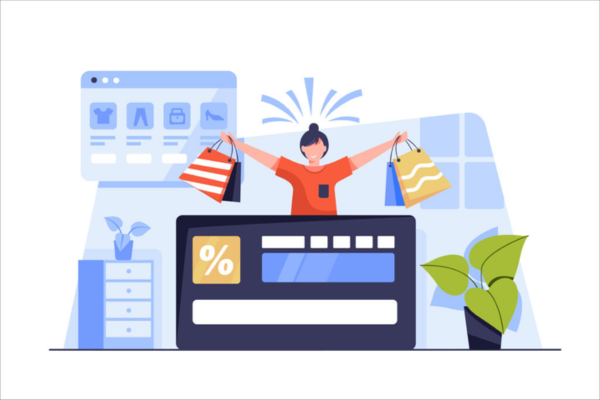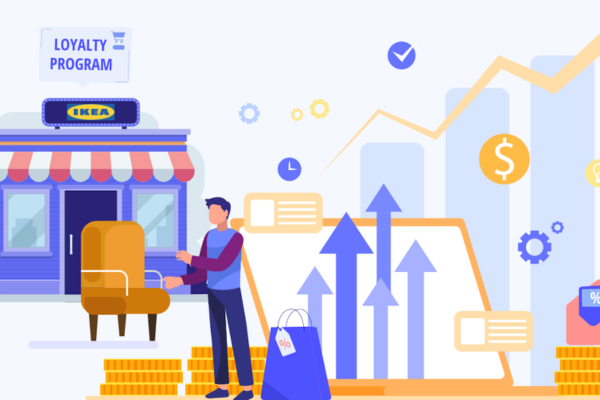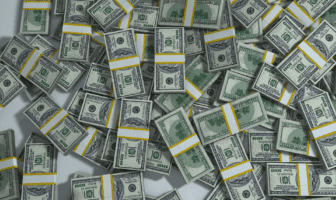
Loyalty isn’t guaranteed. Distributors sell multiple brands, each vying for attention. Without the right incentives, they move to competitors offering better deals.
Well-designed distributor loyalty schemes shift the focus to your products, ensuring repeat business and long-term commitment.
The Problem: Inconsistent Sales from Distributors
Distributors juggle multiple product lines. If there’s no clear advantage in pushing one over another, they prioritize what’s easiest to sell. Without incentives, your brand becomes just another option.
Research by Bain & Company found that repeat customers spend 67% more than new ones. If distributors aren’t consistently selling your products, you’re missing out on a valuable revenue stream.
The Agitation: Loyalty Without Incentives is Wishful Thinking
Expecting distributors to stay loyal without a structured rewards program is a mistake. Even strong relationships weaken when competitors offer better benefits. Loyalty must be earned, not assumed.
A McKinsey study found that brands with effective loyalty programs increase revenue 2.5 times faster than those without. The numbers don’t lie—recognition and rewards keep distributors engaged.
The Solution: Building Distributor Loyalty Schemes That Work

Effective loyalty schemes go beyond occasional discounts. They build stronger partnerships, encourage repeat sales, and reinforce brand preference. Here’s how to create one that drives results:
1. Reward More Than Just Sales Volume
Traditional loyalty schemes reward high-volume distributors, but that’s not enough. Expanding incentives to include:
- Product training completion – Educated distributors on how to sell more effectively.
- New customer acquisitions – Encourages distributors to expand your brand’s reach.
- Upselling and cross-selling success – Boosts overall revenue per distributor.
A report from the Incentive Research Foundation found that distributors who receive structured incentives perform 22% better than those who don’t. Recognizing effort beyond volume keeps engagement high.
2. Make Rewards Meaningful
Cash bonuses fade into operating costs. Memorable rewards create stronger motivation. Travel incentives, high-end tech, or exclusive experiences stand out.
A study by Aberdeen Group found that non-cash rewards increase distributor engagement by 30%. The right incentives make all the difference.
3. Introduce Tiered Benefits
Loyalty shouldn’t be an all-or-nothing game. Tiered programs encourage continuous improvement by offering increasing rewards for higher commitment.
- Base Level: Discounts and early access to promotions.
- Mid-Level: Exclusive training and extended payment terms.
- Top Tier: Luxury incentives, annual retreats, and VIP recognition.
This structure creates a clear path for distributors to deepen their relationship with your brand.
4. Use Gamification to Sustain Engagement
Distributors are competitive. Tap into that mindset with leaderboards, monthly challenges, and real-time performance tracking.
A study by PWC found that 88% of businesses using gamified incentives saw improved engagement. Make selling fun, and loyalty follows.
5. Ensure Simplicity and Transparency
Complicated schemes confuse and frustrate distributors. If they don’t understand how to earn rewards, they won’t engage.
Keep the structure clear:
- Easy-to-track points system.
- Real-time dashboards showing performance.
- Simple, automated redemption processes.
Salesforce reports that 57% of channel partners disengage from loyalty schemes due to a lack of clarity. Make participation effortless.
6. Leverage Data for Personalisation
Generic incentives don’t inspire action. Tailor rewards are based on distributor behavior and preferences. AI-driven analytics can track trends, identify top performers, and suggest customized incentives.
According to Gartner, companies using data-driven loyalty strategies see a 20% increase in partner sales. Personalization boosts impact.
Industries Making the Best Use of Distributor Incentive Programs

There are many strategies the current competitive market has in growing and pushing their distribution channels. One strategy that has proven to be effective for these goals is distributor incentive programs.
The programs reward the distributors for hitting specific sales targets, promoting particular products, or boosting overall performance.
Although such programs are applied in various industries, some are found to be more successful in applying distributor incentives.
1. Consumer Electronics
The main characteristics of this industry in the consumer electronics arena are fast-moving products and the newest innovations. Due to distributors’ efforts towards their industry, new products have easily reached the markets.
Therefore, to combat high demand and change the technology pattern these days, almost all the consumer electronics brands in the space extend their incentive toward their distributor.
Cash rewards, tiered commission structures, and bonuses related to a product launch or certain sales levels.
For instance, companies like Apple, Samsung, and Sony implement such programs so that the distributors would be interested in more current products by those companies and consequently market them in the most significant ways to their customers.
2. Pharmaceuticals and Healthcare
Pharmaceuticals and healthcare products have a distributor network to market the products among hospitals, clinics, pharmacies, and other medical facilities.
Such industries are also very regulated; hence, having distributor relations is crucial for the penetration of markets and customer loyalty.
Pharmaceutical incentive schemes that exist most commonly involve sales performance, growth in share, and introduction of new medicines or treatment modalities.
3. Automotive
The automotive sector is another where distributors are considered to form the backbone of product availability, customer service, and brand representation.
For car manufacturers, it is common to keep dealers who push new models, parts, and accessories.
For automotive companies like Ford, Toyota, and BMW, distributor incentive programs are quite powerful and drive sales, increase market share, and encourage activities related to servicing.
Rewards to automobile dealers can be in the form of cash payback and discounts. On the other hand, training is free to dealership people, and premium marketing assistance is also offered.
4. Food and Beverage
Distributor incentive programs have been among the largest consumer groups in the food and beverage industry.
Within such a large variety of competing products, the food and beverage companies largely depend on distributor relations for optimum distribution and promotion of their products.
Among the other brands, Coca-Cola, Nestlé, and Anheuser-Busch InBev utilize distributor incentives to encourage the distributors to show their products in preference to their competitors in the retail market.
5. Technology and Software
The technology and software sectors highly use distributor incentive programs, especially on the reseller and value-added distributors (VADs).
Incentives assist these sectors to encourage distributors to drive new sales in software licenses, subscriptions, or hardware sales.
Technology companies like Microsoft, Oracle, and Cisco have rewarded their distributors with financial rewards, training opportunities, and certifications. The purpose is to sell the latest solutions to these companies while fostering loyalty among resellers.
6. Building Materials and Home Improvement
The building materials and home improvement industry relies on distributors to supply products to contractors, builders, and retail outlets.
Companies like Home Depot, Lowe’s, and various construction material suppliers have found that well-designed incentive programs can drive product sales and enhance the promotion of specific brands or high-margin items.
7. Fashion and Apparel
The fast-moving and trend-driven apparel and fashion industry naturally depends on new collections or seasonal styles.
Distributor incentives enable fashion brands to ensure retail channels take on new collections, make sales, and promote the brand name.
Retail giants like Nike, Adidas, and Zara closely coordinate with distributors. Such distributors receive incentives tied to seasonal sales targets, volume growth, and even in-store displays.
The Result? Stronger Distributor Relationships and More Sales
Distributor loyalty schemes aren’t just a perk—it’s a strategic advantage. Distributors who feel valued and rewarded actively promote your products, leading to higher sales and stronger market positioning.
Loyalty isn’t assumed. It’s built. The right incentives create lasting commitment and repeat business. The question isn’t whether to implement a loyalty scheme—it’s how soon you can start.




























